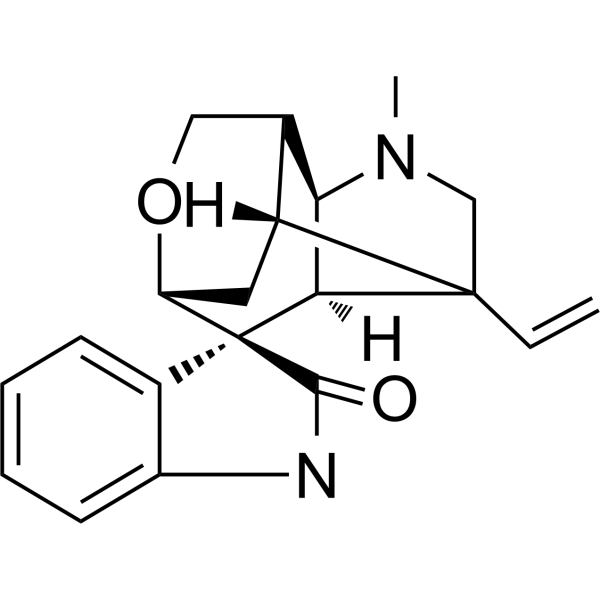Home
Products
Gelsemine



| Product Name | Gelsemine |
| Price: | Inquiry |
| Catalog No.: | CN02251 |
| CAS No.: | 509-15-9 |
| Molecular Formula: | C20H22N2O2 |
| Molecular Weight: | 322.4 g/mol |
| Purity: | >=98% |
| Type of Compound: | Alkaloids |
| Physical Desc.: | Powder |
| Source: | The root of Gelsemium elegans (Gardn. et Champ.) Benth. |
| Solvent: | Chloroform, Dichloromethane, Ethyl Acetate, DMSO, Acetone, etc. |
| SMILES: | C=CC12CN([C@H]3[C@@H]2[C@]2([C@H]4C[C@@H]1C3CO4)C(=O)Nc1c2cccc1)C |
| Contact us | |
|---|---|
| First Name: | |
| Last Name: | |
| E-mail: | |
| Question: | |
| Description | Gelsemine, an alkaloid from the Chinese herb Gelsemium elegans, is effective in mitigating chronic pain. Antinociceptive and hypnotic effects. |
| In Vivo | Gelsemine is an effective agent for treatment of both neuropathic pain and sleep disturbance in partial sciatic nerve ligation (PSNL) mice. Gelsemine (4 mg/kg) exerts analgesic effects on PSNL-induced mechanical allodynia and thermal hyperalgesia. In PSNL mice, Gelsemine (2 and 4 mg/kg) increases the mechanical threshold for 4 h and prolonged the thermal latencies for 3 h. Furthermore, Gelsemine (4 mg/kg, administered at 6:30 AM) increases non-rapid eye movement (non-REM, NREM) sleep, decreases wakefulness, but does not affect rapid eye movement (REM) sleep during the first 3 h in PSNL mice[1]. Immunohistochemical study shows that PSNL increases c-Fos expression in the neurons of the anterior cingulate cortex, and Gelsemine (4 mg/kg) decreases c-Fos expression by 58%[1]. |
| Density | 1.3±0.1 g/cm3 |
| Boiling Point | 493.4±45.0 °C at 760 mmHg |
| Flash Point | 252.2±28.7 °C |
| Exact Mass | 322.168121 |
| PSA | 41.57000 |
| LogP | 3.08 |
| Vapour Pressure | 0.0±1.3 mmHg at 25°C |